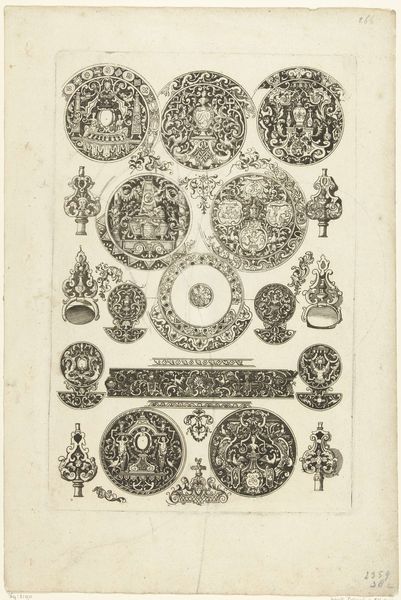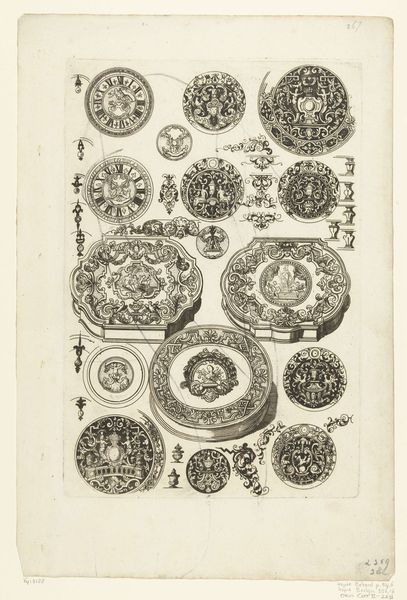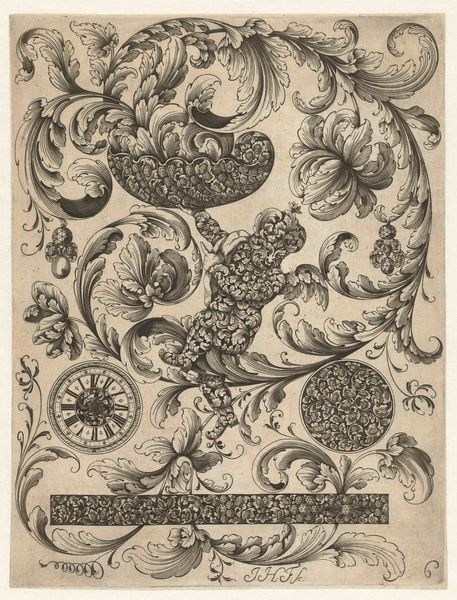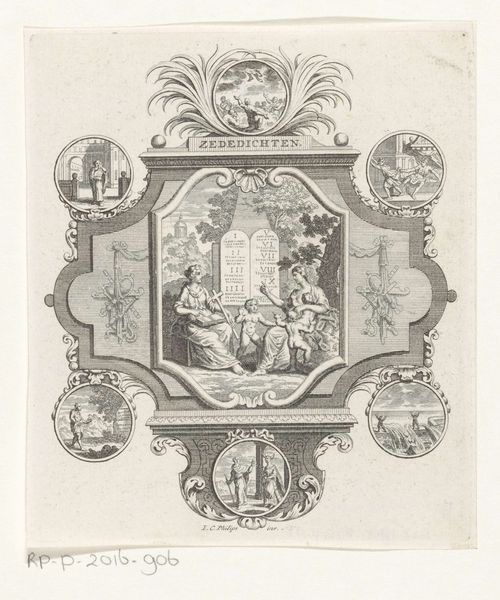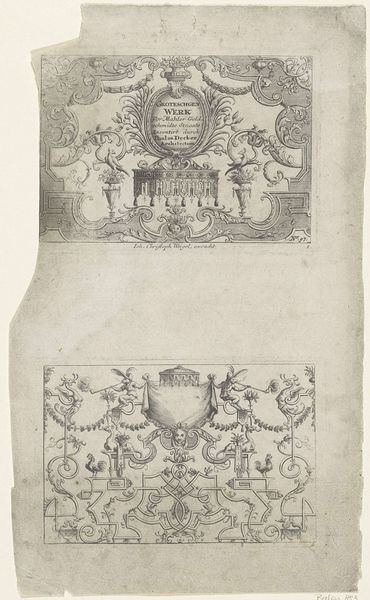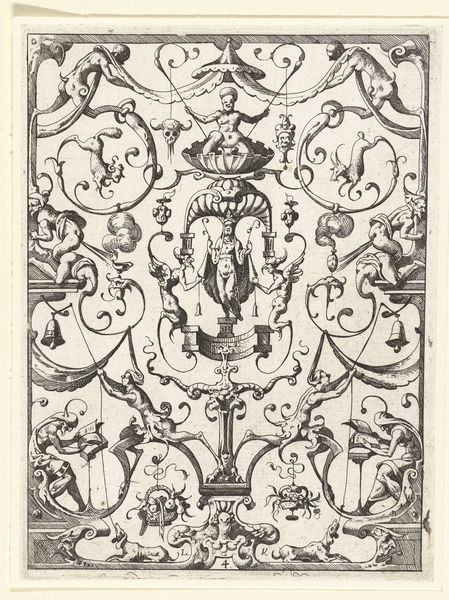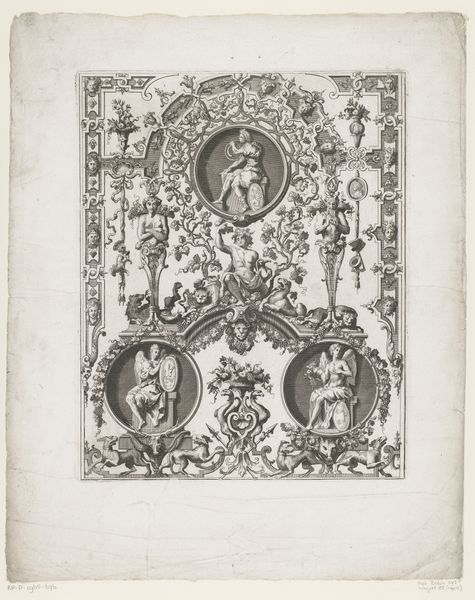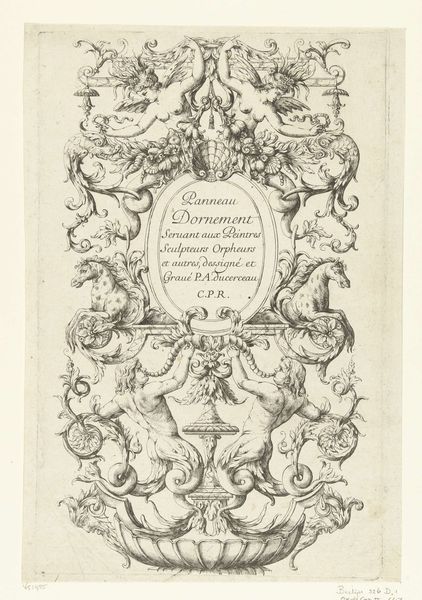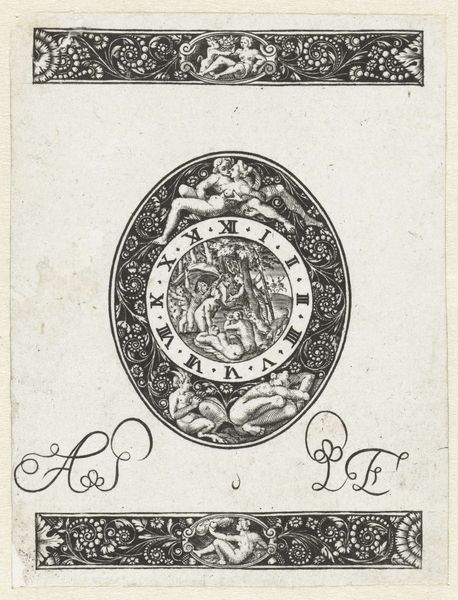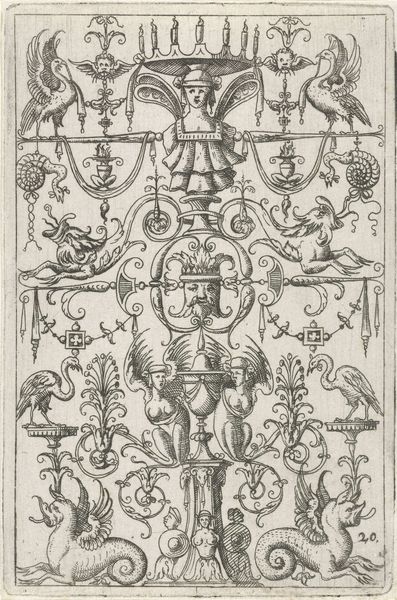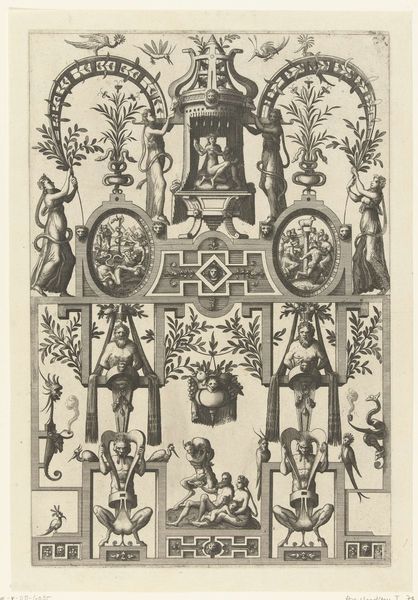
Dimensions: height 279 mm, width 184 mm
Copyright: Rijks Museum: Open Domain
Editor: So, here we have "Zevenentwintig motieven voor horlogemakers," or "Twenty-seven designs for watchmakers," created before 1800, artist unknown. It's a print made with engraving and ink, currently at the Rijksmuseum. It looks like a collection of watch-face designs, all intricate and very Baroque. What strikes you most about this piece? Curator: The function of these images fascinates me. Consider that these designs were not meant to be displayed as art objects but as models. How did they circulate? Did watchmakers actually use them, or were they more aspirational, signs of sophistication and a connection to broader European design trends? It prompts us to consider the role of print culture in disseminating style and taste in the pre-industrial era. Editor: That's really interesting. I hadn’t thought about how art functions outside the gallery setting. So, these prints weren’t necessarily about artistic expression, but more about commerce and skill? Curator: Precisely. Look at the different motifs: the coats of arms, the classical figures. They reflect a desire on the part of the consumer, or perhaps the watchmaker, to be associated with status and classical knowledge. But the printing process itself is a social element, meaning more could be produced and distributed beyond traditional methods, such as painting, enabling new audiences for design and imagery. What does the "anonymous" tag tell us, regarding craft, authorship, and visibility in that period? Editor: I guess it says a lot about the lack of importance placed on the individual artist and more emphasis on the craft itself and its social utility, which is quite different from our ideas about art today. It is also interesting how 'art' at the time acted more like advertising today. Curator: Yes! Seeing the connection between craft and design allows for a deeper appreciation for how art was used in public. It serves as a reminder that these pieces originally had a function that extends beyond simple aesthetics. Editor: Absolutely. It shifts the whole perspective. Thank you.
Comments
No comments
Be the first to comment and join the conversation on the ultimate creative platform.
